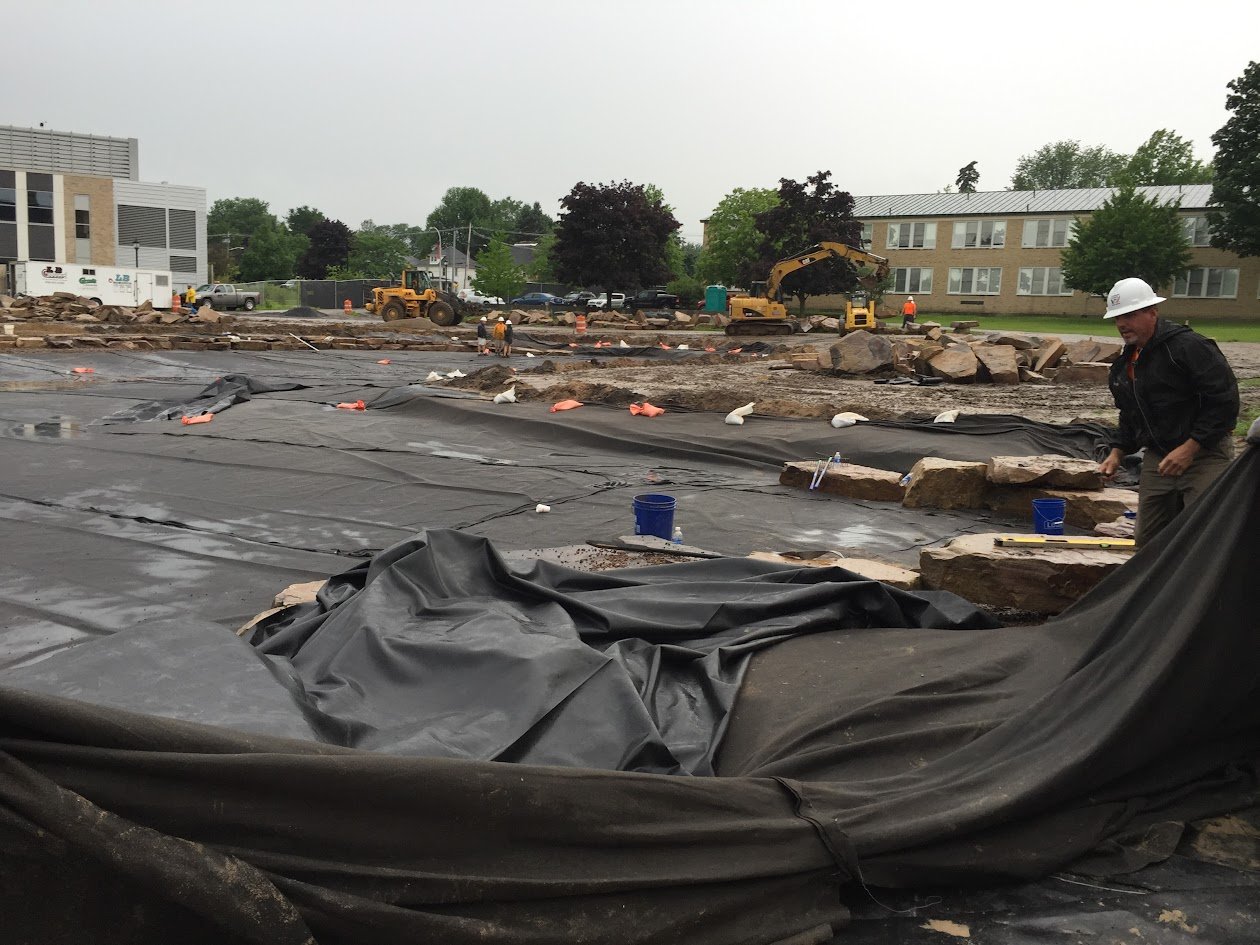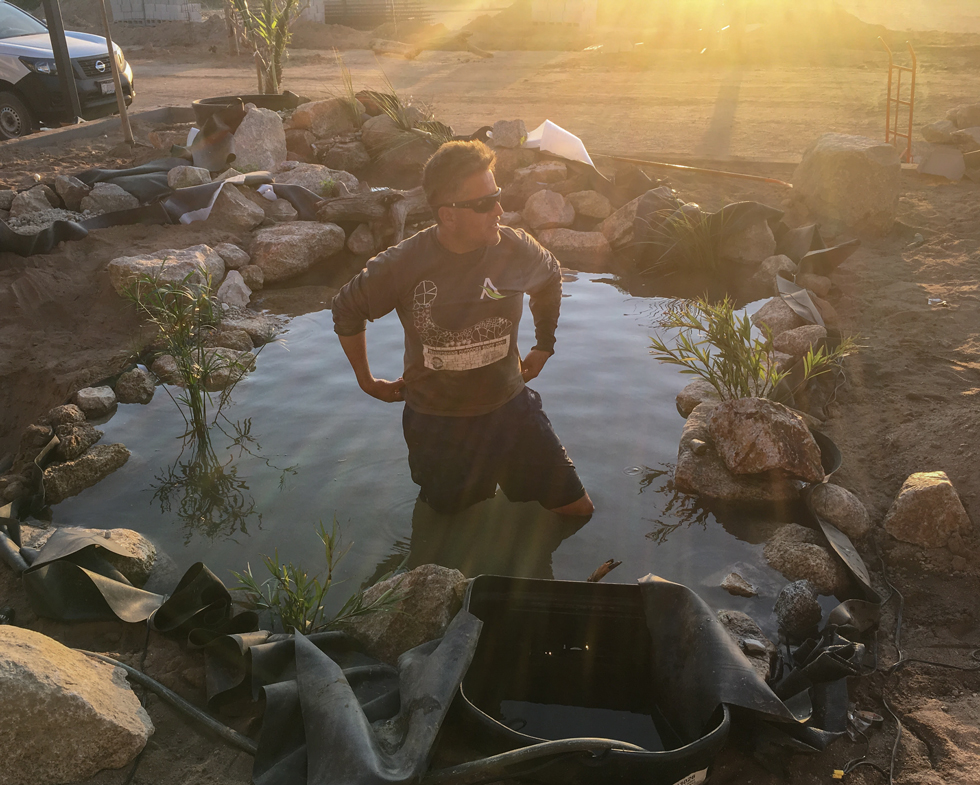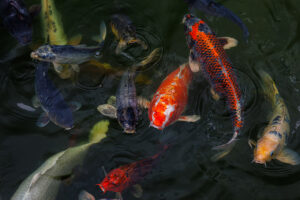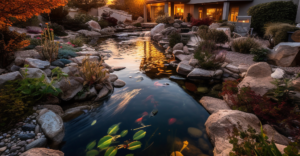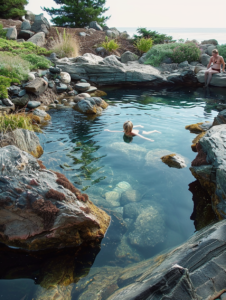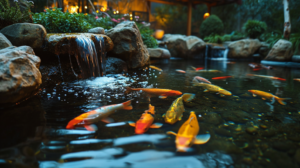Building a pond is an exciting project, but picking the right type is key to long-term success. Hard shell and liner ponds each offer unique benefits, but they suit different needs. Whether you’re after durability or flexibility, understanding these differences will help you make an informed choice. Let’s break it down and find out which one works best for you.
Overview of Pond Types
When designing a pond for your backyard, you’ll encounter two main options: hard shell ponds and liner ponds. Each type is built differently and offers its own set of advantages. Whether you’re looking for something quick to install or want the freedom to shape your pond in unique ways, understanding these two options will steer you in the right direction.
What is a Hard Shell Pond?
A hard shell pond, as the name suggests, is made from a rigid, pre-formed structure. These ponds typically come in set shapes and sizes, and they’re ready to go straight out of the box. Think of them as a giant tub designed to hold water but with features specifically shaped for fish, plants, and natural decor.
Common materials for hard shell ponds include:
- Fiberglass: Lightweight, strong, and resistant to cracks. This material is highly durable and can handle outdoor elements well.
- Concrete: Often used for larger, permanent ponds, concrete provides unmatched durability but typically requires professional installation.
Hard shell ponds are perfect for those who want something easy to set up and maintain. Once placed in your desired spot and leveled, hard shell ponds hold their shape with no surprises. However, since they’re pre-molded, you get less freedom in choosing the size or style.
What is a Liner Pond?
A liner pond, by contrast, offers flexibility that hard shell ponds can’t match. This type of pond uses a flexible sheet material to create a custom-sized and shaped pond. You dig a hole in the ground and then line it with the material, allowing you to design something truly unique to your space.
Materials commonly used for pond liners include:
- EPDM (Ethylene Propylene Diene Monomer): A rubber-based liner that’s highly durable and resistant to UV rays, making it ideal for outdoor use.
- PVC (Polyvinyl Chloride): Another popular choice with good flexibility, though it’s generally not as tough as EPDM.
- HDPE (High-Density Polyethylene): Lightweight and budget-friendly, though it may require extra care during installation.
Liner ponds are great if you want complete control over the shape and depth of your pond. Whether you’re adding a shallow zone for plants or a deep end for fish, liners offer endless possibilities. However, they do require a more careful setup process to prevent leaks and ensure a snug fit in the ground.
Key Differences Between Hard Shell and Liner Ponds
Choosing between a hard shell and liner pond goes beyond aesthetics. Understanding how they perform in terms of durability, cost, installation, maintenance, and visual appeal will help you make the best decision for your space.
Durability and Lifespan
Durability is a key factor when investing in a pond, as it directly affects its lifespan. Hard shell ponds are made from solid materials like fiberglass or plastic, which makes them inherently tough and crack-resistant. With proper care, they can last 20 years or more. However, extreme weather conditions, such as freezing and thawing cycles, might cause minor cracks over time.
Liner ponds, on the other hand, rely heavily on the quality of the liner material. High-grade liners like EPDM or HDPE can last 15-25 years with routine upkeep and protection against punctures. The flexibility of liners allows them to handle soil movement better than hard shell ponds, reducing the risk of leaks in shifting landscapes. That said, a small tear in a liner can require immediate attention to avoid water loss.
In short:
- Hard shell ponds are sturdy but may crack under extreme conditions.
- Liner ponds are flexible yet prone to punctures.
Installation Process
When it comes to installation, hard shell ponds are generally quicker to set up. These pre-formed ponds are ready to install right out of the box. All you need to do is dig a hole, level the base, and set the pond in place. The predictable shapes make them beginner-friendly, but they offer less room for creativity.
Liner ponds require more time and precision. First, you’ll need to dig a custom shape, smooth the surface to avoid sharp edges, and lay an underlayment before installing the liner. Proper placement is crucial to prevent wrinkles and leaks. While this process is more labor-intensive, it gives you complete freedom to create a one-of-a-kind pond that fits your vision.
Key takeaway:
- Hard shell ponds are faster and easier to install.
- Liner ponds demand more effort but provide design flexibility.
Cost Analysis
Budget plays a big role in deciding between hard shell and liner ponds. Hard shell ponds have a higher upfront cost due to the materials used, and their rigid design often needs fewer accessories for installation. However, they are limited in size and shape, which can impact value if you’re envisioning a large pond.
Liner ponds are usually more affordable initially, especially for smaller projects. The liner material itself is often cheaper than a pre-molded shell. That said, digging, underlayment, and potential custom features can increase the overall cost. Larger or more complex designs may also require professional installation.
So, the final cost depends on your approach. If you’re DIYing a small-to-medium pond, liners often edge out hard shells in price. For a quick and basic setup, hard shells might win on convenience.
Summary of costs:
- Hard shell ponds: Higher upfront costs but few additional materials.
- Liner ponds: Lower starting price but potential higher labor expenses.
Maintenance Needs
The maintenance required for each pond type is another point to consider. Hard shell ponds are low-maintenance since there are no seams or loose edges that need attention. Cleaning debris is straightforward, and there’s little risk of hidden leaks unless the shell cracks.
Liner ponds require more diligence, especially in areas with tree roots, sharp stones, or heavy wildlife activity. Regular inspections help catch small tears or punctures early. But if a problem arises, patch kits make it fairly easy to repair most issues. On the flip side, the flexibility of a liner lets you adjust or expand your pond more easily than a hard shell if your needs change.
In short:
- Hard shell ponds require less upkeep but are harder to fix if damaged.
- Liner ponds need consistent checks but offer easy repairs and adjustments.
Aesthetic Appeal
Aesthetics can be a deciding factor for many homeowners. Hard shell ponds come in limited shapes and sizes, which can make them look unnatural in some settings. However, they’re great for creating a clean and structured appearance.
Liner ponds, with their customizable shapes, allow for a more organic, natural look. You can build shallow zones for plants, deeper areas for fish, or mimic the contours of a natural pond. Liners give you the creative freedom to integrate your pond seamlessly with landscaping features like waterfalls, rocks, or gardens.
For those who want a tailored, natural aesthetic, liner ponds are the obvious choice. But for anyone who prefers simple, symmetrical designs, a hard shell pond can work just as well.
What to consider:
- Hard shell ponds: Structured and uniform in appearance.
- Liner ponds: Flexible shapes for a natural look.
Each pond option brings something different to the table. Understanding these key differences will help you weigh the pros and cons based on your priorities. No matter your choice, a well-thought-out pond will add beauty and tranquility to your outdoor space.
Advantages of Hard Shell Ponds
When it comes to backyard water features, hard shell ponds offer plenty of benefits. These pre-formed options combine reliability with simplicity, making them a favorite for many homeowners. Let’s explore why hard shell ponds stand out.
Long-Term Investment
Choosing a hard shell pond is like putting money into something that won’t let you down for years. These ponds are made from sturdy materials such as fiberglass, plastic, or concrete, designed to handle weather changes and daily wear. When installed properly, they can easily last 20 years or more, giving you incredible value over time.
They also maintain their shape and integrity without much fuss. Unlike pond liners, which can shift or tear, hard shells are rigid and capable of withstanding ground movement. This makes them a great pick for anyone looking to set up their pond once and enjoy it for decades without constant intervention.
Think of it this way: while initial costs for hard shell ponds may be higher, their durability and low maintenance translate into fewer expenses and headaches down the road. They’re a “set it and forget it” option, ideal if you want peace of mind knowing your pond will stay intact over the years.
Strength and Stability
One of the standout features of hard shell ponds is their remarkable structural strength. Because they’re pre-formed with a solid infrastructure, these ponds are engineered to resist cracking or bowing under pressure. Once set into the ground, they hold their shape firmly, even in areas prone to soil movement or heavy foot traffic nearby.
This strength minimizes the risk of water escaping or the pond deforming over time. Additionally, hard shell ponds won’t sag or wrinkle, which can be a common issue with flexible liners. If you live in an area with wildlife or curious pets, this added durability can also prevent accidental damage.
In essence, hard shell ponds perform like a fortress for your backyard water feature. Their stability ensures they can handle both external elements and daily use without losing functionality. If you’re after a stress-free setup that can endure the test of time, this type of pond delivers unmatched reliability.
Benefits of Liner Ponds
When it comes to designing your dream pond, liner ponds check many of the right boxes. They offer flexibility, affordability, and the potential for a completely unique backyard feature. Here’s why liner ponds might be the better choice for you.
Flexibility and Customization
Liner ponds give you full creative control over your pond’s design. Unlike hard shell ponds, which come in fixed shapes and sizes, liners adapt to whatever vision you have in mind. You’re not limited by predefined molds—they fit your space, not the other way around.
Want an irregular shape that blends naturally into your yard? Looking to create zones with varying depths for aquatic plants and fish? No problem. With a liner pond, you can carve out every contour just the way you want it.
Some homeowners even shape their liner ponds to mimic natural water features, adding a wild, organic look to their landscaping. You can turn even a small yard into a serene retreat by designing a pond that looks like it flows right out of nature itself.
Here’s what makes liner ponds stand out for customization:
- Unlimited sizing: No restrictions on depth, area, or shape.
- Natural appearance: Easily create a more organic, landscape-integrated look.
- Room for creativity: Add elements like islands, streams, or blended edges for plants.
- Adapts to terrain: Perfect for sloped or uneven ground that would challenge hard shell ponds.
A liner pond is more than just a water feature—it’s an open canvas waiting for your personal touch.
Lower Initial Costs
Installing a liner pond is often more affordable upfront compared to hard shell options. This cost-effectiveness makes them a go-to choice for many homeowners, especially those working on tighter budgets.
The biggest savings come from the liner material itself. High-quality liners like EPDM or PVC are available at reasonable prices, and you usually only pay for the size you need. Plus, you don’t have to invest in expensive pre-formed molds or heavy-duty materials like fiberglass or concrete.
Here are a few reasons liner ponds cost less at the start:
- Cheaper materials: Liners are more budget-friendly than molded shells.
- DIY possibilities: With proper guidance, you don’t always need a pro to install one.
- Flexible scaling: Start small and expand later without tearing out a rigid structure.
It’s worth noting, while liner ponds need more effort during installation, much of this can be done on your own to cut costs further. With hard shell ponds, you often pay for convenience in exchange for higher price tags.
Liner ponds offer the financial freedom to experiment and adjust without making a huge dent in your wallet, making them the practical choice for many pond enthusiasts.

